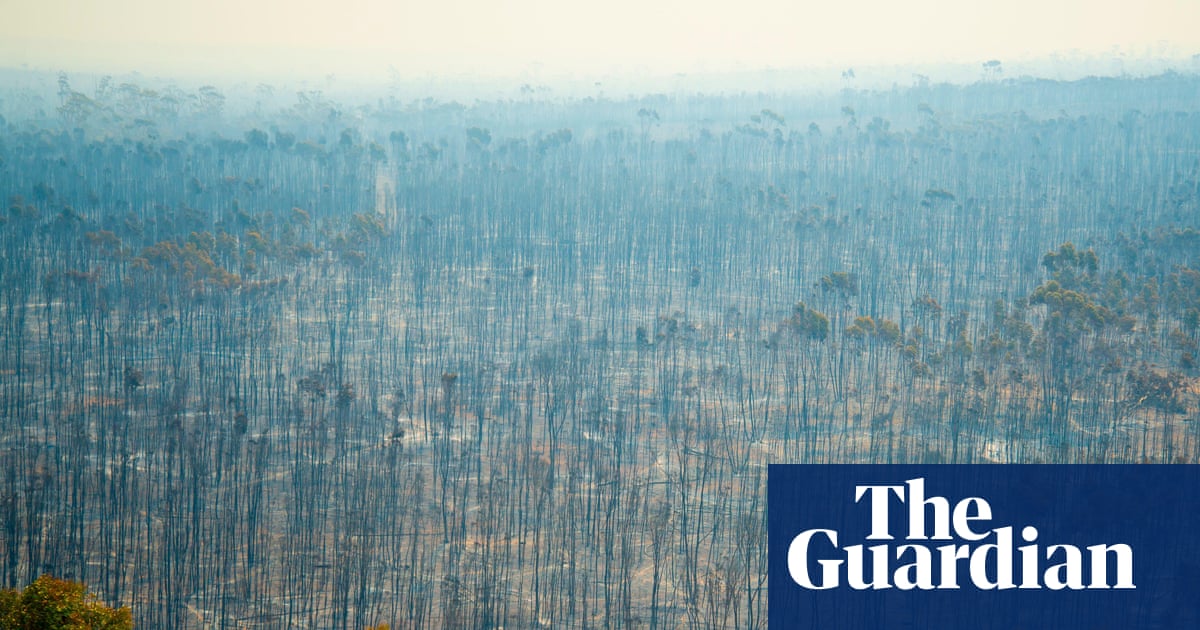Labor’s 2035 emissions target a ‘sliding doors’ moment for future generations | Australian politics

Leading climate advocates have warned the Australian government’s decision on a 2035 emissions reduction will be a historic “sliding doors moment” for the country, with an international goal to keep global heating to 1.5C now hanging by a thread.
The prime minister, Anthony Albanese, is expected to announce a target range on Thursday after a scheduled morning cabinet meeting before formally submitting it to the UN later this month.
Bill Hare, the Australian founder of research organisation Climate Analytics and a veteran of UN climate negotiations, said it was critical the 2035 target was aligned with keeping global heating to 1.5C above preindustrial levels – a goal of the 2015 Paris climate agreement.
Sign up: AU Breaking News email
“This is a historic decision. The Paris agreement is hanging by a thread. A real act of leadership is needed now,” he said. “Australia needs to be on that 1.5C pathway if we want to convince the rest of the world to follow.”
Hare said Australia’s first national climate risk assessment, released on Monday, showed the country “has a lot of skin in the game” and the 1.5C goal was “critically important in protecting our way of life and our ecosystems”.
The Climate Council’s chief executive, Amanda McKenzie, said the target decision was “a critical moment for Australia”.
“It will shape the lives of all of us for the next century,” she said. “At stake is the safety, security and prosperity of our communities and the environment in a fast-heating world.”
The government has been advised on the 2035 target by the independent Climate Change Authority, which is required to consider climate science, international developments, economics, technology developments and social impact. The climate change minister, Chris Bowen, received the authority’s final advice last week and is responsible for recommending a target to cabinet.
An authority consultation paper on the target last year suggested a reduction of at least 65% and up to 75% would be ambitious, but achievable if more action was taken. It is expected to narrow this range and drop below 75% in its final advice.
Business organisations, climate advocacy groups and analysts have lobbied and consulted with the government over where it should land, with arguments ranging from a call for a target below 60% to reaching net zero by 2035. Those urging a more ambitious goal have largely supported a campaign for 75% to be included in the range. Others have argued this would be too exacting to reach.
The target range will form the basis of Australia’s “nationally determined contribution”, or NDC, submitted to the UN. Australia’s existing target is to cut greenhouse gas emissions by 43% below 2005 levels by 2030.
More than 190 countries are expected to submit targets before the Cop30 climate summit in Brazil in November. Countries agreed each NDC would be more ambitious than the last and reflect the country’s “highest possible ambition”. But some developed nations have submitted NDCs not aligned with the 1.5C goal.
skip past newsletter promotion
Sign up to Breaking News Australia
Get the most important news as it breaks
Privacy Notice: Newsletters may contain information about charities, online ads, and content funded by outside parties. If you do not have an account, we will create a guest account for you on theguardian.com to send you this newsletter. You can complete full registration at any time. For more information about how we use your data see our Privacy Policy. We use Google reCaptcha to protect our website and the Google Privacy Policy and Terms of Service apply.
after newsletter promotion
Footage shows coral bleaching at Western Australia’s Ningaloo Reef – video
Bowen has backed the need for science-based climate targets, including calling at UN climate summits for the “strongest possible action” to limit global heating to 1.5C.
The climate risk assessment found climate change was already affecting every aspect of life in Australia and warned continuing rising temperatures would escalate the risk of heatwave-related deaths, the rupturing of financial systems and supply chains, and billions of dollars in damage from extreme weather events and rising sea levels.
Albanese described the report as a “wake-up call” and said it would inform the 2035 target while also stressing the need to plan for an “orderly” transition to avoid losing public support for climate action.
The chief executive of WWF-Australia, Dermot O’Gorman, said the target would be “the most consequential climate policy decision this term of government, this decade, and this century”. He said it was an opportunity to “lock in trust with the Pacific”, to advance the country’s bid to host the Cop31 climate summit next year and “unlock Australia’s place as a renewables superpower”.
“It’s the Australian prime minister’s sliding doors moment on climate,” he said. “Setting an un-ambitious target locks in another decade of pollution and climate damage. The possibility of stabilising warming to the safer temperature limit of 1.5C above preindustrial levels is on a knife-edge.”
Gavan McFadzean, the Australian Conservation Foundation’s climate and energy program manager, said a weak target would lead to continued fossil fuel extraction and send a “defeatist message” to business leaving “the opportunities of the clean energy transformation to other countries”.




